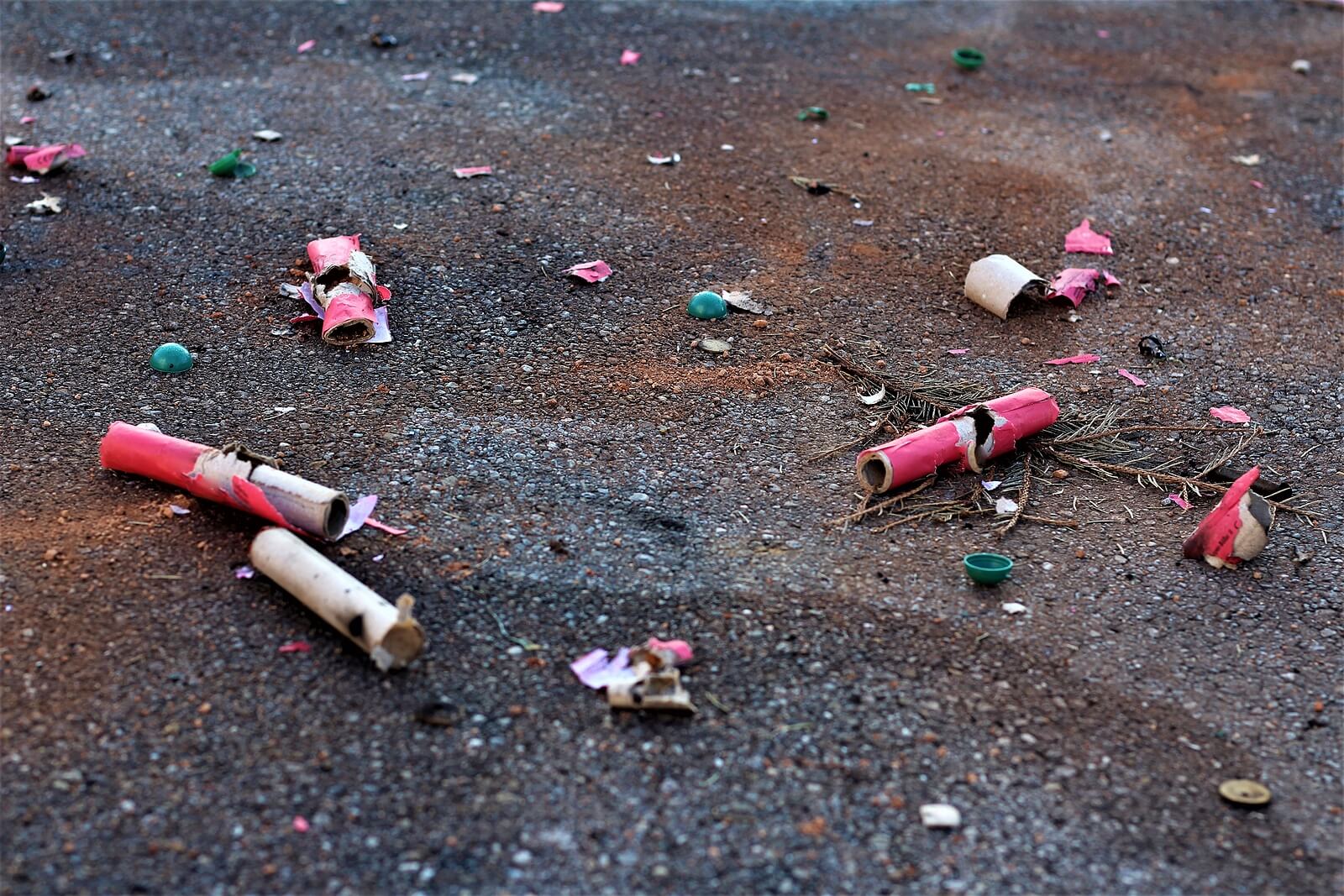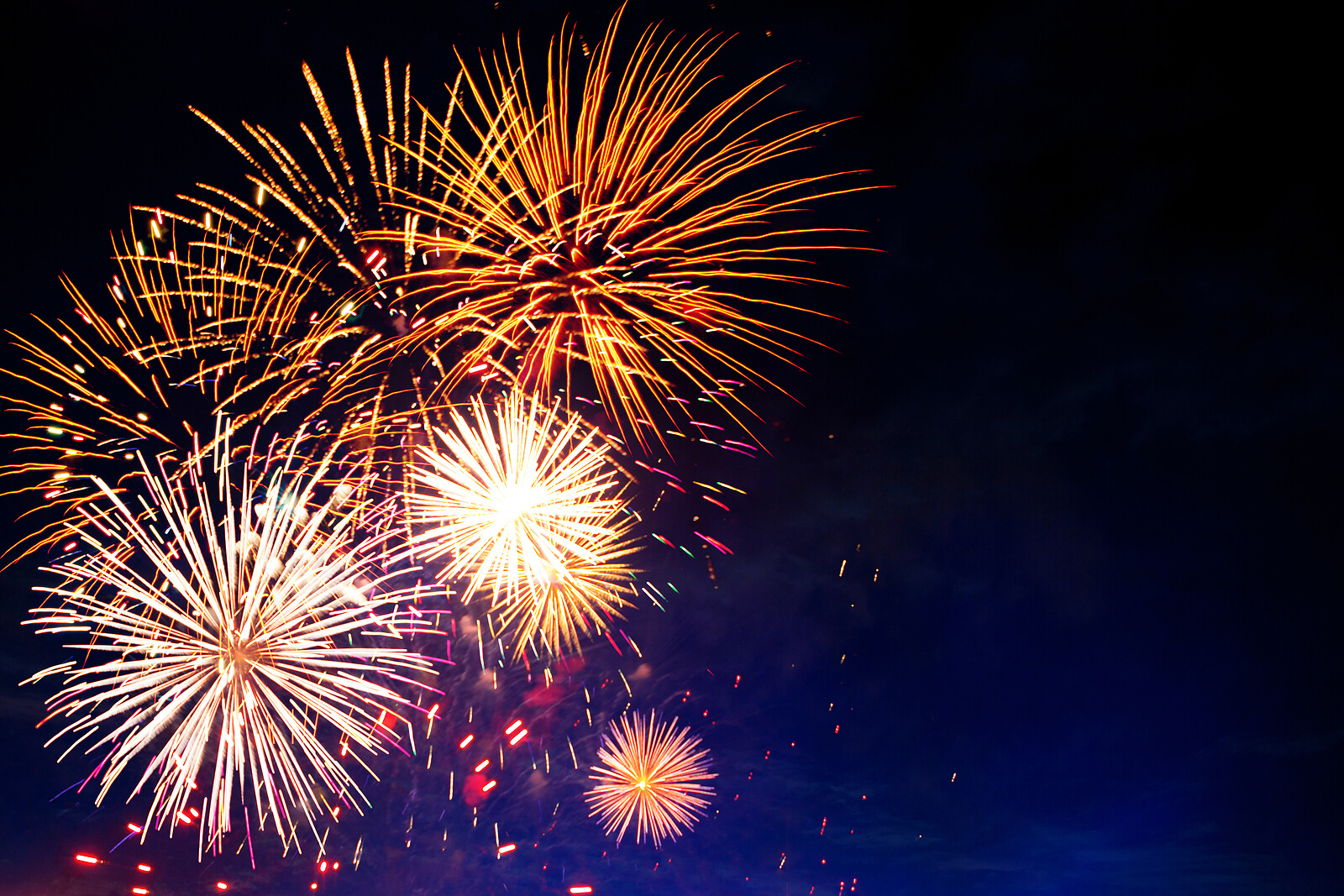Remember, remember the Fifth of November. That’s right. Bonfire night is nearly upon us, which can only mean it’s time to set them off. And by them, I mean fireworks. A flickering explosion of noise, colour, and sizzle that brings theatre to the sky.
Most experts agree that fireworks originated in China more than 2,000 years ago. They believed that the deafening bangs frightened evil spirits and had the power to scare them away. This is why we associate fireworks with happier times.
They have gone on to become a crowd-pleasing spectacle to mark celebrations, milestones and events. Displays can vary in magnitude from intimate sparkles at a private party, to breathtaking exhibitions at large-scale public celebrations that dominate the skyline.
Most of us are aware of the dangers posed by fireworks, especially when they are used irresponsibly. However, as awareness continues to heighten around climate change and air quality pollutants, we explore the underlying impact of these dazzling light shows on our planet and whether it is time for us to embrace more eco-friendly alternatives.
Are fireworks bad for the environment?
As mesmeric as they are, the stark reality is that fireworks cause damage to the environment in a short amount of time. They are also extremely hazardous to human health.
Selection boxes containing multiple fireworks may seem to disappear into the atmosphere without a trace, save for a cloud of smoke, and cascade of light and colour. Yet it’s impossible to turn a blind eye to the titanic amount of plastic fragments, cardboard tubes, and harmful waste that is left scattered around.
When fireworks explode in the air, plastics along with other particles are released and drift to the ground where they will never decompose. These particles contain residues of unburnt propellants, along with metal by-products from the colourants which can threaten wildlife if accidentally ingested. They can also end up contaminating our soil and tainting our water systems.
Additives (metal salts) are used to produce the different colours. The metal salts and explosives undergo a series of rapid chemical reactions that emit smoke and gases into the atmosphere. Three greenhouse gases responsible for climate change are released during this process – carbon dioxide, carbon monoxide, and nitrogen.
What harmful chemicals are in fireworks?
Among other ingredients, fireworks typically use heavy metals and toxic chemicals (for e.g. chlorine, sulfur dioxide) that are exposed to high temperatures, in order to achieve their bright colours and produce oxygen so that burning occurs. For instance, sodium produces yellow fireworks, whereas aluminium is a common component of sparklers.
Dioxin, a combustion by-product, and certain ‘PBT’ (persistent, bioaccumulative and toxic) rated heavy metals such as lead and mercury are of particular concern. Not only are they toxic, but they also never perish – therefore remaining in the environment for long periods of time and consequently contaminating the food chain.
Even though fireworks may only deposit these chemicals several times a year, they’re only adding to the problem by being highly resistant to degradation.
In addition, many fireworks also rely on an inorganic chemical called perchlorate (used for anything in need of a combustive blast – matches, military explosives, etc). These can accumulate in our drinking water, as well as infect rivers and lakes.
Other chemicals dispersed by fireworks include barium and cadium, which are radioactive and known carcinogens. Exposure to these chemicals has been linked with a number of health conditions, ranging from dementia and depression to chronic fatigue.

Do fireworks pollute the air?
It probably won’t surprise you to know that fireworks can seriously affect the quality of air we breathe. Although fireworks and bonfire celebrations can lead to temporary increased levels of air pollution in localised areas, the pollution has the potential to travel for miles and diminish the level of air quality around the world.
Black powder (sometimes called gunpowder) is the catalyst used for getting fireworks airborne. It combines three elements: an oxidiser (potassium), a fuel (carbon), and an accelerant (sulfer).
The powder produces a substantial amount of smoke and soot that can diminish air quality. On top of this, the smoke consists of fine toxic dusts that can enter the lungs.
Those with respiratory issues such as asthma may be at greater risk to the pollutants formed in the atmosphere following a fireworks show. In Britain, firework night and the following day are the peak days for hospital admissions for asthma and other breathing problems.
Also consider where you position yourself during a display, as this can also affect your level of exposure. If you are downwind of the showpiece, you will be subjected to considerably higher levels of pollution.
In some cases, air quality can return to normality in just a few hours following the controlled blasts, but breathing in the smoke and chemicals is more probable from consumer ‘backyard’ fireworks. This is because they are set off at a low level, which makes inhalation more likely compared to professional setups.
Are there eco-friendly fireworks?
It’s heartening news for the environment. A suitable “green” replacement can be created by using a clean burning, nitrogen-based fuel, making the need for perchlorate redundant. This produces less smoke and releases fewer contaminants into the atmosphere. In-turn, only small amounts of metal salts are required as colouring agents.
If you still swear by the traditional method, then plump for white coloured fireworks as they have fewer harmful chemicals than the most vibrant hues. If your display consists of more ground-based explosives (like Catherine wheels), you’re more likely to be able to locate the debris in the immediate vicinity and dispose of it safely.
Leading German fireworks manufacturer Weco has trialled compostable fibres in their rockets, and in 2021 were hopeful of replacing the plastic caps of rockets with a version made from recycled paper.
Alternatives to lighting fireworks
If launching fireworks into the sky isn’t your bag, or the noise is simply intolerable, then consider a mass of glow sticks to fill the night with colour. Shooting confetti through the air via a confetti cannon is another fun and safer alternative to fireworks.
Fireworks will always be synonymous with this time of the year, but if we yearn for zero emissions, it begs the question – is the only option to eradicate them completely?
